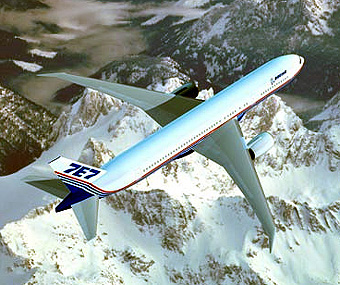The market potential for a new airplane of this size is forecast for up to 3,000 units over the next 20 years. The company expects to formally offer the new airplane to customers in early 2004, with entry into service targeted for 2008. Before this date, airlines must be also convinced to buy, for a while, some more units of "inefficient airplanes".
In the picture: The first released virtual picture of the Boeing 7E7. (Boeing)
(Aeromedia, February 2003)
